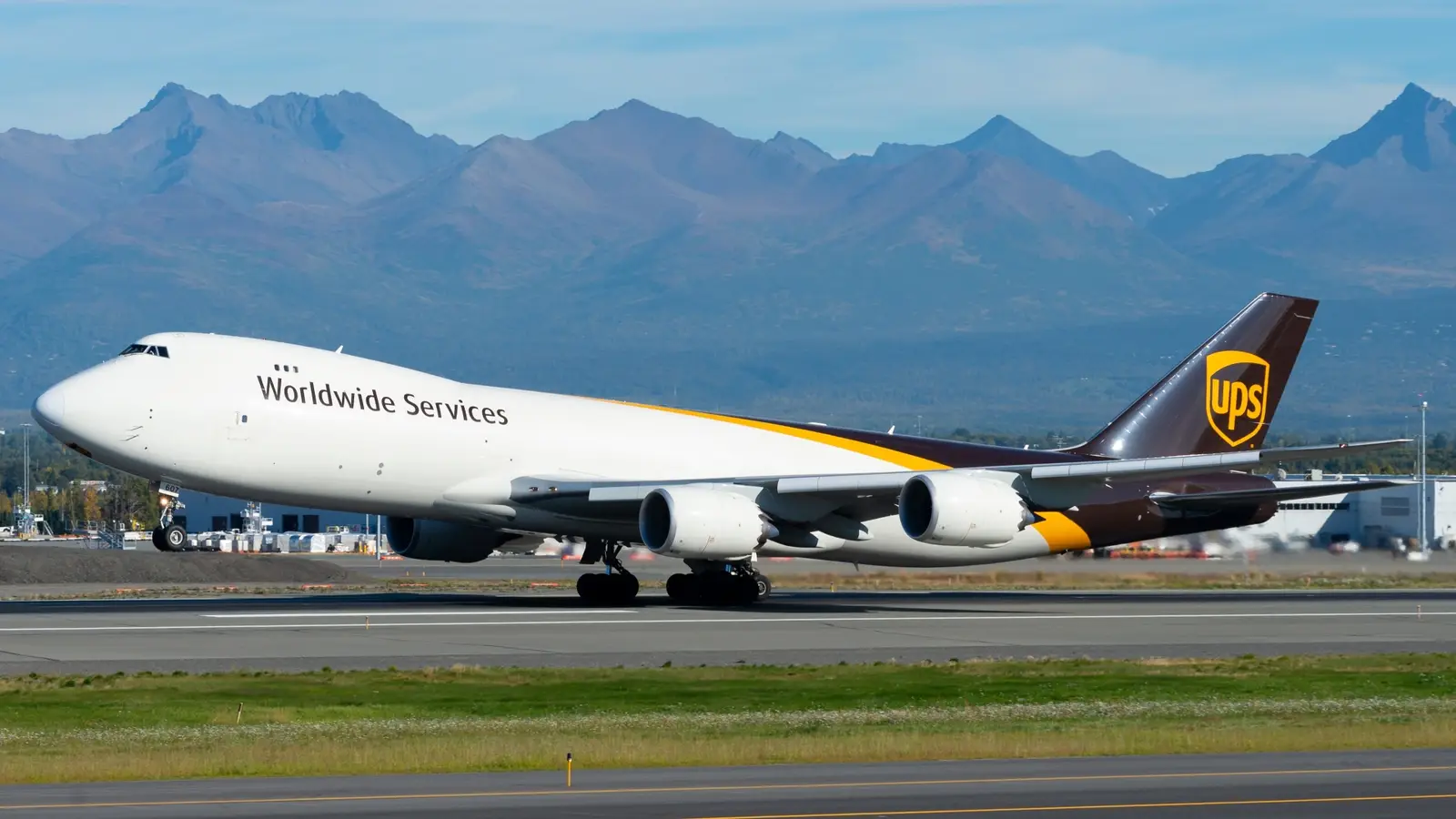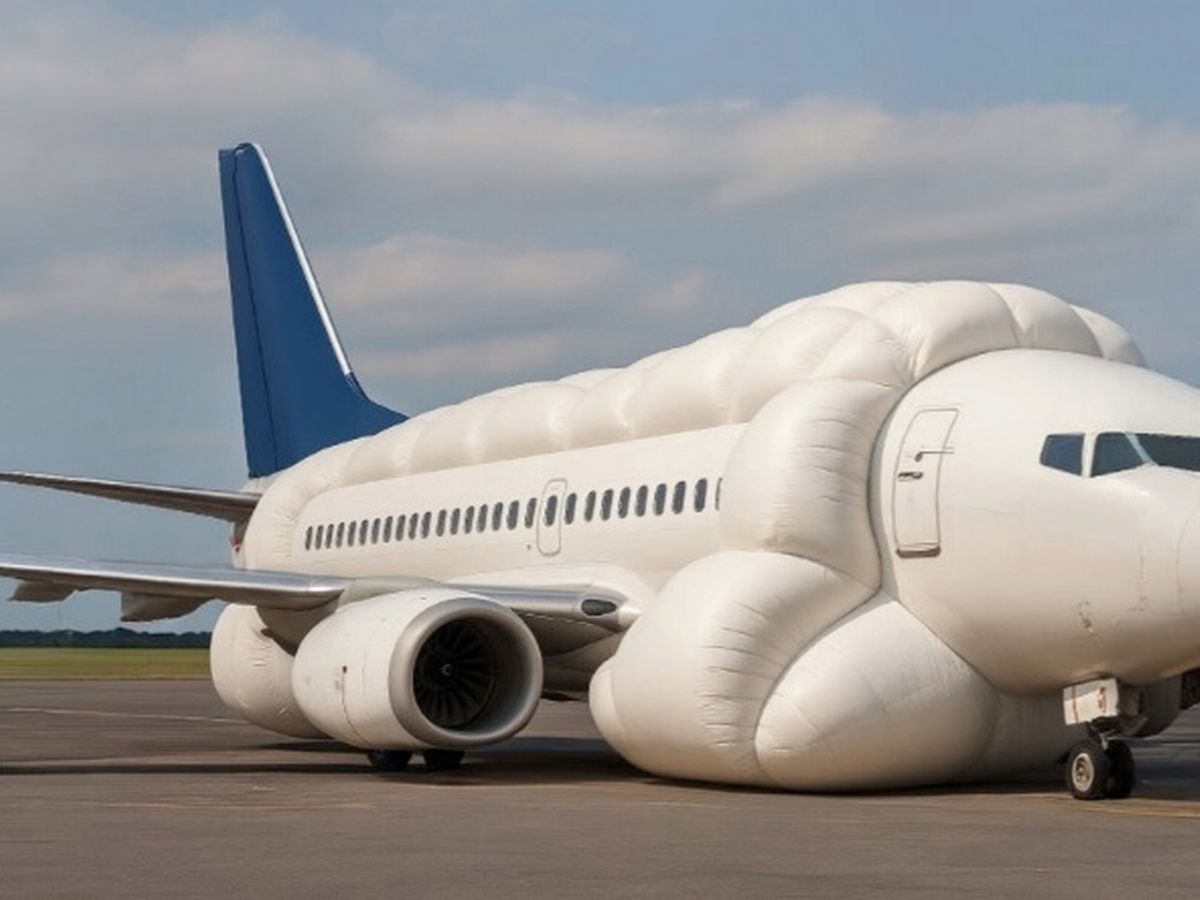
There are few aircraft as iconic as the Boeing 747, a lumbering four-engine quadjet with an iconic hump and unmatched passenger capacity. The jet, once the go-to aircraft for all kinds of long-haul travel, is seldom used by passenger airlines today. Only a handful of airlines still have the model in service, and only Lufthansa, Air China, and Korean Air operate the aircraft’s most advanced passenger variant, the 747-8i.
All the world’s longest passenger 747 flights today connect the world’s largest and busiest airports, as the jet is well-suited to routes that see exceptionally high levels of passenger demand. However, the longest commercial route operated by this aircraft is actually not a service between two major hubs on a flagship passenger airline.
In fact, cargo airlines, for which the aircraft serves as an ideal freighter platform, continue to use the aircraft on some of their highest-demand freighter routes. The 747’s longest individual route connects Louisville Muhammad Ali International Airport (SDF) and Al Maktoum International Airport (DWC) in Dubai, a journey that takes over 13 hours to complete. We discuss the specifications of this unique route, the purposes behind it, and how long we can expect it to maintain its crown.
A Brief Overview Of This Service
UPS Airlines flight 76 is a nonstop service that connects UPS Worldport, the cargo airline’s flagship terminal, to Dubai World Central (Al Maktoum) Airport, a flight with a length of approximately 7,700 miles (12,400 km). This makes it the longest regularly scheduled 747 flight currently in service today. The extended range of the 747-8F and its high payload capacities make this kind of performance possible. Due to variable winds, the aircraft’s block time runs between 13 and 14 hours.
Routings are variable, and the aircraft can consistently serve this route due to its impressive fuel efficiency and extended-range capabilities. According to the flight tracking website FlightAware, the aircraft typically arcs northeast across the United States and Canada to enter the North Atlantic Organized Track System before descending into European airspace, doing so over the United Kingdom before transiting across Central and Eastern Europe. The route then typically proceeds across Turkish airspace and the Middle East, all while avoiding Russian and Iranian airspace.
Operational restrictions in the Middle East have pushed US and foreign carriers to adopt well-defined route strategies. From an operational perspective, aircraft crews plan heavy-weight step climbs, rising to around 30,000 feet (9,100 meters) to manage strong winds that could either decrease flight time or increase it if poor wind conditions occur. The flight terminates at Dubai’s cargo-oriented airport, making it an optimal destination for a high-value cargo operator like UPS.
The Boeing 747 Is A Key Element Of The UPS Fleet
UPS operates one of the world’s largest active 747 freighter fleets, comprising 41 models in service and two additional jets on standby. Its 747 fleet has an average age of around 11.5 years, with the workhorse of the fleet being the 747-8F, of which the airline has 29 in service. The youngest jumbo jets in the airline’s fleet average just 6.1 years of age, and they carry around 135 tons of freight when equipped with a full load.
Industry experts and engineers have noted the jet for its exceptional fuel efficiency for a quad-engine aircraft. It features a nose-opening door and a large side door that offers transportation capabilities for outsized freight, and can comfortably handle 12-14-hour nonstop flights. Complementing these aircraft in the UPS fleet are twelve older Boeing 747-400 models. These models tend to skew on the older side, with an average age of around 23.8 years, according to ch-aviation.
They remain valuable on dense transpacific and transatlantic cargo lanes. Elsewhere, when peak season leads to significantly increased demand for these kinds of services, its extra capacity also comes in handy.
The 747 still serves as the workhorse of the UPS fleet, and the airline utilizes this jet for some of its highest-capacity, highest-demand routes. Here, customers value the ability to easily add more packages to a shipment without a corresponding delay in delivery timing. The 747 freighter offers far more attractive operating economics to cargo airlines than the passenger variant does to its counterparts.
The 747 Has Also Been A Historical Element Of UPS’ Diverse Fleet
Historically, UPS operated a number of earlier 747 variants, including the 747-100 (of which there were 17 airframes) and the Boeing 747-200 (of which the airline maintained a smaller fleet of just nine jets). All of these aircraft have long since been retired. In total, the airline has operated around 70 Boeing 747 aircraft, with the current 747-8F heavyweight aircraft enabling the airline to operate long-haul trunk routes linking its hub at Worldport Louisville to gateways worldwide.
There are relatively few aircraft today that allow cargo operators to effectively balance their interests in having a capable long-haul aircraft with one that can haul an exceptional amount of freight. The 747-8F’s range and payload profile help reduce exposure to high fuel prices in relation to other freighters, while the previous-generation legacy Boeing 747 allows the company to move as much cargo as possible when needed. Across the two models, UPS can standardize maintenance. Here are some specifications according to Boeing:
From a strategic perspective, this mix gives UPS two different levers, starting with efficiency and stage length, which the 747-8F brings to the table on long-haul segments and premium products. The aircraft’s capacity picture can be effectively leveraged alongside the 747-400, which can offer attractive economics on specific high-density long-haul routes.
A Deeper Look At UPS’s Operations
Network construction is one of the key factors making the 747 a particularly appealing choice for this massive American cargo airline. As most cargo airlines do, UPS centers its entire operational network around one massive hub in Louisville. Due to the overnight express economics of shipping and the density of package transfers that need to occur in one specific location, UPS has developed a massive global hub-and-spoke network that is anchored by just one, highly automated hub.
This allows the airline to minimize its duplicate fixed costs, including the expenses associated with facilities, labor, maintenance, or information technology. It also allows the carrier to collapse a massive global network that includes thousands of potential city pairs into just a select group of destinations, including origins, hubs, and just one specific transfer point. Aircraft cargo load factors tend to increase significantly as a result of this kind of network strategy, as it reduces the fleet’s overall footprint.
An airline that looks to co-locate heavy maintenance, spare parts, and standby crews at one specific node will improve asset utilization across the board while also ensuring on-time performance remains strong. There are some tradeoffs associated with this kind of system. We see concentration risk as a key piece of the puzzle here, as the megahub structure can result in a single ATC issue or weather-related event leading to system-wide delays.
Where Does UPS Deploy Its Boeing 747 Fleet?
UPS extensively deploys its Boeing 747-8F and Boeing 747-400F fleets across its network. These aircraft typically fly from Louisville to major nodes in the airline’s network. In Europe, this includes Cologne/Bonn (CGN), a major hub for the carrier. Elsewhere, Anchorage’s Ted Stevens International Airport (ANC), Dubai World Central, Hong Kong International (HKG), Shenzhen (SZX), Shanghai Pudong (PVG), Taipei (TPE), Seoul Incheon (ICN), and Tokyo Narita (NRT) also feature.
The 747 is used to concentrate capacity onto key trunk routes, making it a favorite of operators like UPS. The aircraft’s extended range means it can serve the vast majority of these routes nonstop without the need for a technical stop.
The aircraft is used on several domestic routes, including nonstop connections from Louisville to Ontario (ONT), Philadelphia (PHL), Dallas/Fort Worth (DFW), and Miami (MIA). Peak-season surges also incentivize higher 747 usage by the airline on high-yielding domestic routes.
The Bottom Line
The case for using the 747 for commercial passenger flights is relatively weak today. However, in the past, this case was significantly stronger. Today, the Boeing 747 is most effectively deployed by cargo airlines as a versatile freighter. The aircraft blends a combination of capacity and long-haul capabilities that has continued to deliver exceptional financial performance for operators.
Few aircraft are as ideally suited to the needs of cargo airlines as the massive and versatile Boeing 747 freighter. This dynamic model continues to uniquely serve the needs of cargo airlines and other strategic operators worldwide. As a result, it is very clear why the jet remains a stalwart of long-haul global operations today, with the jet slowly remaining the last true high-capacity freighter on the market.



